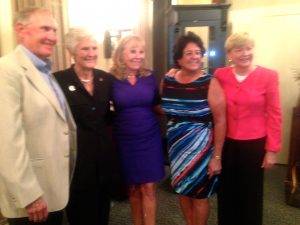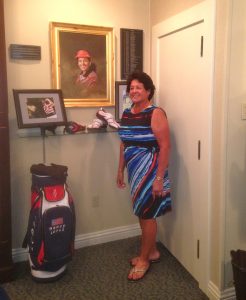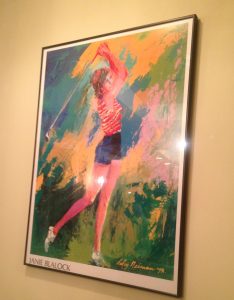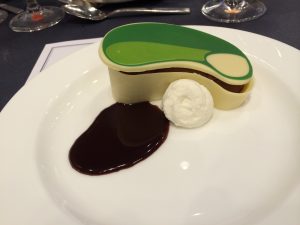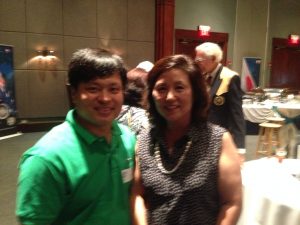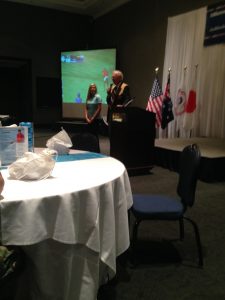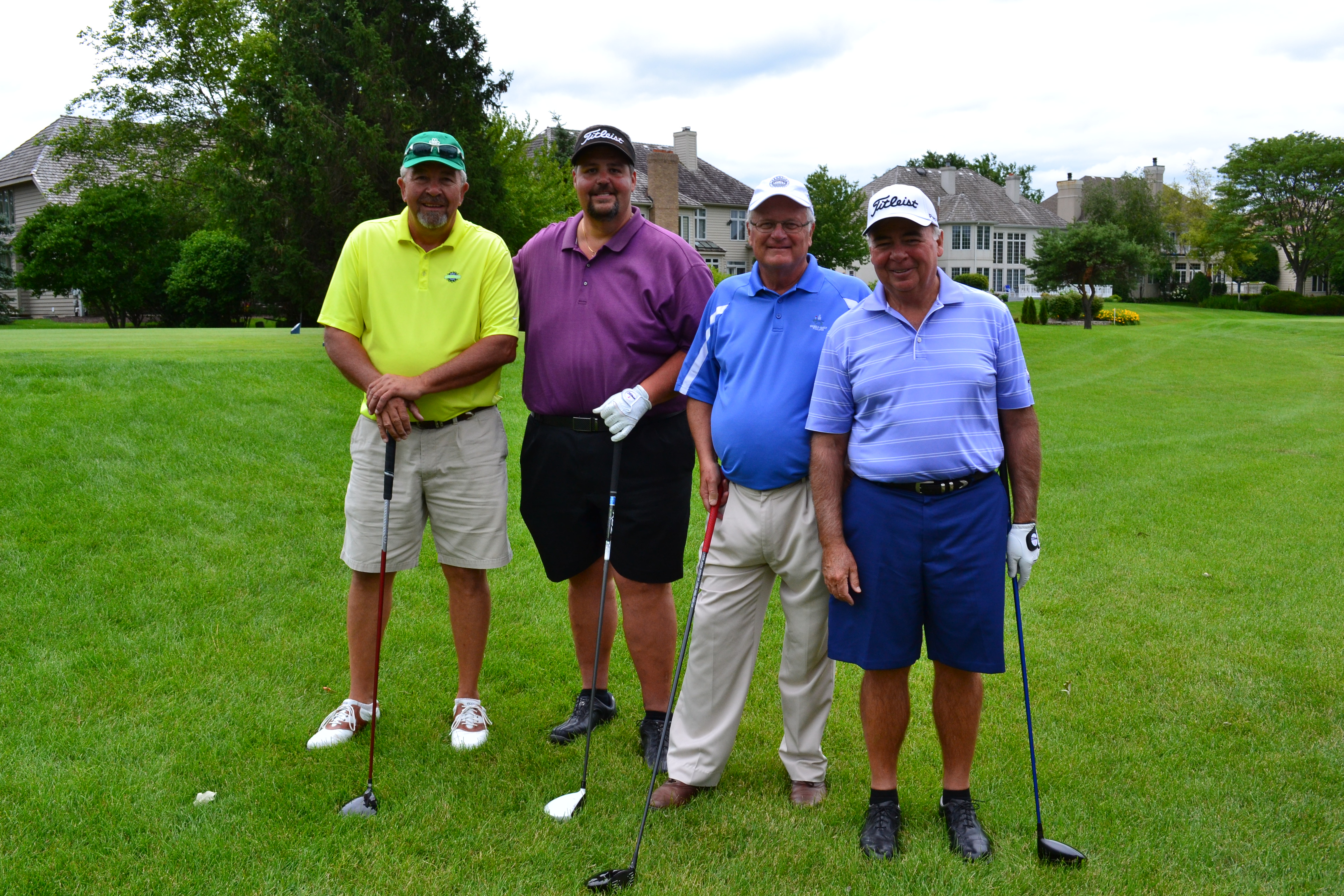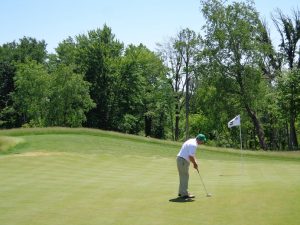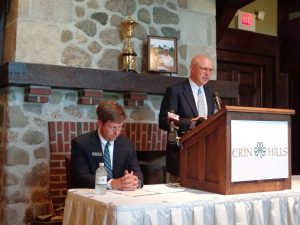Ashtyn Brown’s final swing at the LPGA Legends Championship may not have produced the desired result, but there’s no doubt she was the star of the show.
As the ambassador for Riley Children’s Hospital at IU Health, Ashtyn was the honorary starter for the 54-hole tournament on Friday. She hooked her tee shot, just a minor distraction in a saga that began in March when the hospital’s partnership with the tournament was announced.
The end result, said French Lick director of golf Dave Harner, was a $100,000 donation to the hospital through tournament activities.
Along the way Ashtyn gave several speeches describing her brutal battle with acute lymphoblastic leukemia. She also went on a media tour with Legends star Rosie Jones and played in Jones’ tournament in Roswell, Ga.
Once the Legends arrived at French Lick Ashtyn was a focal point at Thursday’s pro-am activities as well as the dinner in which she gave one more touching speech to a big gathering in the rotunda of the West Baden Springs Hotel at French Lick Resort.
In the pro-am she was paired with Joanne Carner, the LPGA Hall of Famer, and was the cart partner of Steve Ferguson, chairman of the board of Cook Group. There’s about a 50-year difference in age between Carner and Ashtyn, and their round together didn’t quite last 18 holes because of time constraints involving the Hall of Fame dinner.
“It was just incredible just to be out there with those ladies, especially Joanne,’’ said Ashtyn. “She has so much experience in golf and is a great lady as well. It’s not surprising or shocking how great these people on the Legends Tour are, and my being a golfer myself, you strive to be like them.’’
The Legends event wasn’t the first for Ashtyn in her role with the hospital. She also have speeches in golf-related settings in Indianapolis and at the PGA’s Children’s Miracle Network event in Orlando, Fla.
In all her speeches she related how she was diagnosed with the disease twice. The first was in 1999, and she endured over two years of chemotherapy. Three years later she suffered a relapse and needed another two-plus years of chemo, radiation and a trial medication that proved to be a miracle drug.
At one point, she said, her weight had dropped to 35 pounds and she was given a 10 percent chance to survive. Along the way she lost 10 of her friends along with her doctor to cancer, but Ashtyn beat the odds.
“Through speaking it’s helped me heal, just as much as I want to help other people,’’ she said. “I’ve gone through so much hurt.’’
But she is moving on from those trying days and will check in at the University of Indianapolis on Monday for her senior year. She calls the Legends experience “something I’ll remember forever.’’
In high school in Richmond, Ind., Ashtyn was a member of the state-runner-up girls golf team in her sophomore year and carried golf into college. After two years at Ball State she transferred to Indianapolis and is part of a strong team there. Though she’s a senior academically, she took a redshirt season previously and has two years of athletic eligibility remaining. She plans to make the most of it.
“I want to take my game as far as I can,’’ she said; “I love the game, but realistically I’ve got to get much better than I am now. I want my game to be the best it can be.’’

